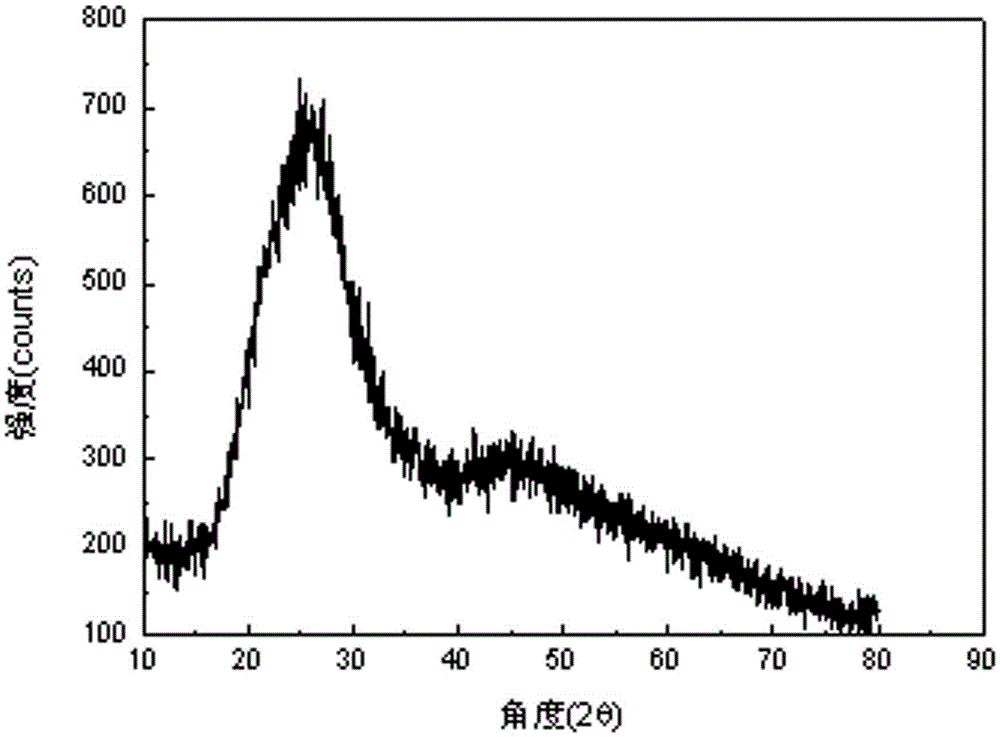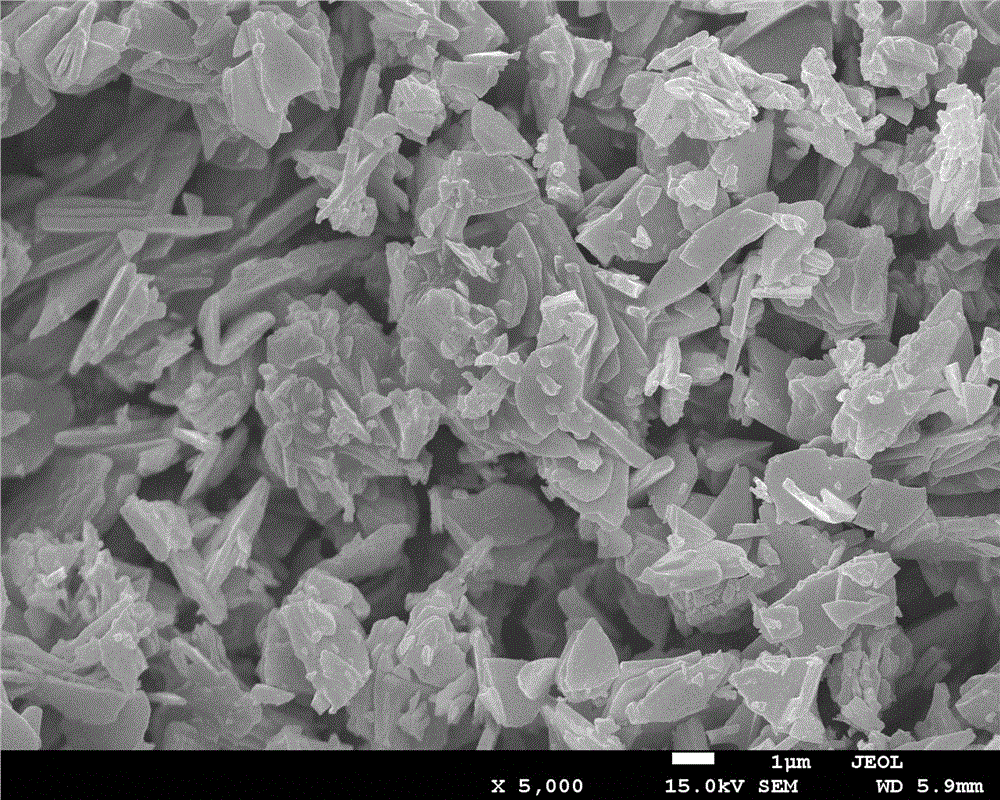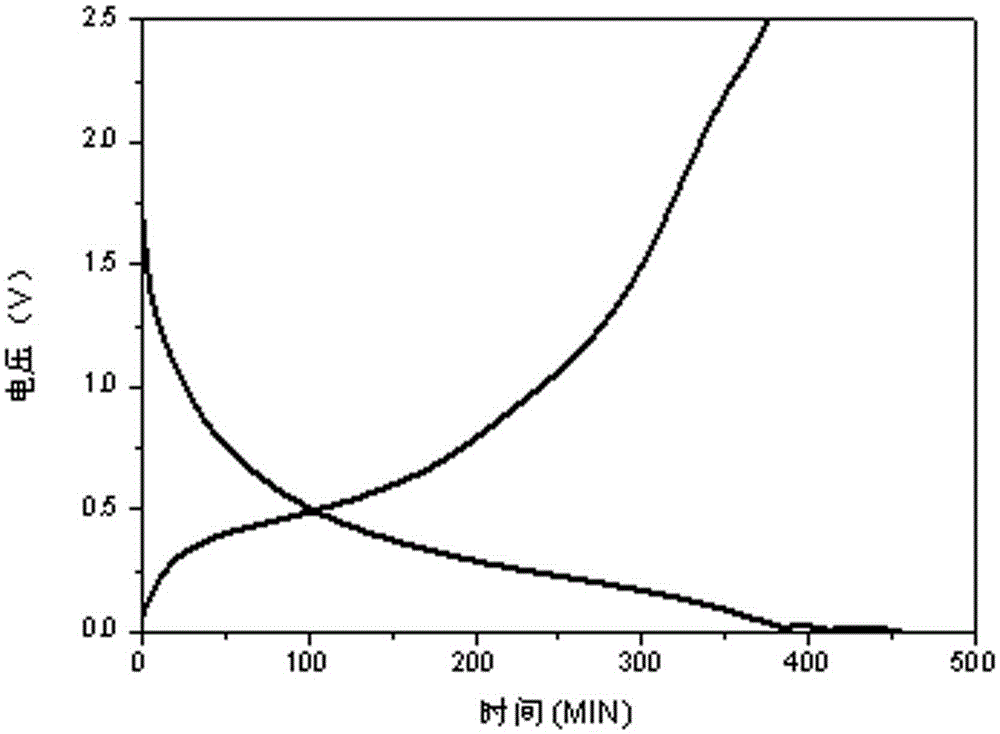A kind of negative electrode active material and its preparation method and a kind of lithium ion battery
A negative electrode active material, stannous pyrophosphate technology, applied in the direction of battery electrodes, circuits, electrical components, etc., can solve the problems of low initial efficiency of Sn-based negative electrode active materials, low material tap density, etc.
- Summary
- Abstract
- Description
- Claims
- Application Information
AI Technical Summary
Problems solved by technology
Method used
Image
Examples
preparation example Construction
[0023] The present invention also provides a method for preparing a negative electrode active material, the steps comprising: S1, mixing a solution containing a tin source with a solution containing a phosphorus source to react to obtain a suspension solution; mixing the present invention is not limited, for example, tin The source is configured as a solution containing a tin source, and the solution containing the tin source can be an aqueous solution configured with a tin source and water, and the phosphorus source is configured as a solution containing a phosphorus source, and the solution containing the phosphorus source can be an aqueous solution configured with a phosphorus source and water, Then directly mix their aqueous solutions, or add the aqueous solution of the tin source to the aqueous solution of the phosphorus source, and stir to make it react uniformly. In the present invention, it is preferable to slowly add the solution containing the phosphorus source to the...
Embodiment 1
[0038] 4.51g of stannous chloride with 2 crystal waters is dissolved in 40ml of deionized water to form solution A, 1.85g of diammonium hydrogen phosphate is dissolved in 40ml of deionized water to form solution B, and 8g of glucose Dissolve in 40ml of deionized water to form solution C, then add solution B dropwise to solution A at 6ml / min under stirring to form a white suspension solution, continue stirring for 1 hour after the addition is complete, and then Add solution C to the above-mentioned white suspension solution, and continue to stir for 30 minutes. The above reactions are all carried out in a water bath at 60°C. Finally, use 30wt% ammonia water to adjust the pH value of the above-mentioned suspension solution to 4.2; stir for 4 hours and wait for deionization Stop stirring when the water evaporates to half, and put the product into an oven at 60° C. for drying treatment. After drying, it was transferred to a tube furnace filled with argon, and the temperature was r...
Embodiment 2
[0042]Dissolve 4.3g of stannous sulfate in 30ml of deionized water to form solution A, dissolve 2.3g of diammonium hydrogen phosphate in 60ml of deionized water to form solution B, and dissolve 6g of citric acid in 30ml of deionized water to form Solution C: add solution B 10ml / min dropwise to solution A under stirring conditions to form a white suspension solution, continue stirring for 30 minutes after the addition is complete, then add solution C to the white suspension solution, and continue stirring The above reactions were all carried out in a water bath at 50°C for 30 minutes, and then the pH value was adjusted to 6.8 with 30wt% ammonia water; stirred for 2 hours and stopped when the deionized water evaporated to half, and the product was placed in a vacuum oven at 100°C Do drying. After drying, transfer it to a tube furnace with nitrogen gas, raise the temperature to 600°C at a rate of 3°C / min and keep it for 5 hours, then cool down naturally to obtain sample S2.
[0...
PUM
 Login to View More
Login to View More Abstract
Description
Claims
Application Information
 Login to View More
Login to View More - R&D
- Intellectual Property
- Life Sciences
- Materials
- Tech Scout
- Unparalleled Data Quality
- Higher Quality Content
- 60% Fewer Hallucinations
Browse by: Latest US Patents, China's latest patents, Technical Efficacy Thesaurus, Application Domain, Technology Topic, Popular Technical Reports.
© 2025 PatSnap. All rights reserved.Legal|Privacy policy|Modern Slavery Act Transparency Statement|Sitemap|About US| Contact US: help@patsnap.com



